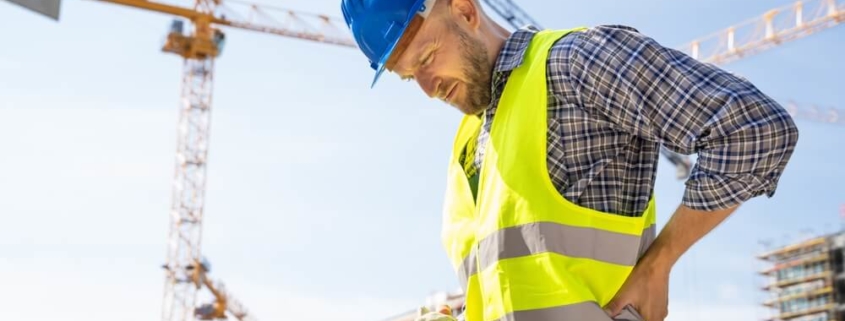OSHA Standards on Back Injury Protection
OSHA Standards on “Back Injury Protection”
Back injures are the leading cause of worker disability, costing businesses millions each year and accounting for countless lost days of work. Back injuries can be extremely painful and long-lasting. The Bureau of Labor Statistics reports that back injuries account for roughly 20 percent of all workplace injuries and illnesses.
The Occupational Safety and Health Administration (OSHA) doesn’t have specific regulations for back safety. But training workers to lift safely is implied by the General Duty Clause of the 1970 Occupational Safety and Health Act. The law requires that employers provide workers with a workplace that is “free of recognized hazards.”
OSHA has indicated that it will not focus its enforcement efforts on businesses that are taking measures to reduce hazards that cause employee strains and sprains or that have implemented effective ergonomic programs. If your employer has done these things, there should be some level of back injury protection. But there are no guarantees against a serious injury.
Common Causes of Workplace Low Back Injury
Back injuries sustained in the workplace typically come from one of two categories – accidental injuries resulting from an unexpected action or strain and non-accidental injuries resulting from normal, non-strenuous activities.
A back injury can result from a job that is physically demanding, such as one requiring a person to lift heavy loads and do a lot of twisting or straining. They can also result from poor ergonomics due to standing for long periods or having to sit in a bad office chair.
Your back is made up of bones, ligaments, muscles, connective tissue, vertebrae, and discs. And a workplace back injury can damage any of those parts or systems. Though an injury can occur at any point along your spinal column, from the neck to the tailbone, most workplace back injuries involve the lumbar area or lower back. Sprains and strains are common, as are more serious disk problems, such as compressions and herniations, which may require surgery and long-term treatment.
Preventing Back Injuries With Lifting Safety Procedures
Preventing back injuries is a major challenge for employers. But it’s also a responsibility since businesses are supposed to provide a safe working environment. Although no strategy is going to completely eliminate back injuries, the frequency and severity of these cases can be reduced by incorporating effective training, ergonomics, and better design of work tasks.
OSHA has studied ways to help prevent injuries caused by lifting. The agency specifies two types of controls – administrative and engineering.
Administrative Controls
OSHA suggests that employers establish effective procedures and processes that will reduce the instances of lifting injuries. Some examples include:
- Requiring that at least two workers lift heavy loads to limit exertion
- Creating systems so that workers rotate away from tasks that require repetitive motion, constant exertion, or awkward postures. Designing job rotation systems that allow workers to rotate between jobs that require the use of different muscle groups.
- Training on the proper use and maintenance of power and pneumatic tools
- Staffing “floaters” to give workers needed breaks in addition to scheduled ones
Engineering Controls
OSHA suggests that employers design or redesign workspaces to minimize or eliminate hazards that can lead to lifting or low back injuries. Some examples include:
- Reducing the weight of loads to limit the force of exertion
- Using devices to reposition or lift heavy objects to limit the force of exertion
- Redesigning tools to allow more neutral postures
- Repositioning work tables to eliminate the need for excessive/long reach and enable neutral working postures
- Making tasks less repetitive by using diverging conveyors
- Eliminating excessive reaching or leaning by installing diverters on converters to direct materials toward the worker
Back Support Belts – Do They Prevent Injury?
There has been a dramatic increase in the use of back support belts in industrial settings. The National Institute for Occupational Safety and Health (NIOSH), which is part of the CDC, states that the decision to wear one of these belts is a personal choice. However, back support belts are not a “cure-all” for back injury prevention. In fact, there is no scientific evidence supporting their benefits. Whether you use a back support belt or not, the best back injury prevention methods are the administrative and engineering controls that your employer implements to make your job and workplace safer.
What If You’ve Suffered a Back Injury at Work?
If you’ve suffered a workplace back injury that restricts you from doing your job or requires medical attention, it’s important to understand that your employer has an obligation to provide a safe workplace that protects you from these issues. Appropriate back injury protection and training are critical parts of effective safety management and workplace preparedness. To learn more about protecting yourself from workplace back injuries, contact OSHA Injury Attorney directly.




Leave a Reply
Want to join the discussion?Feel free to contribute!